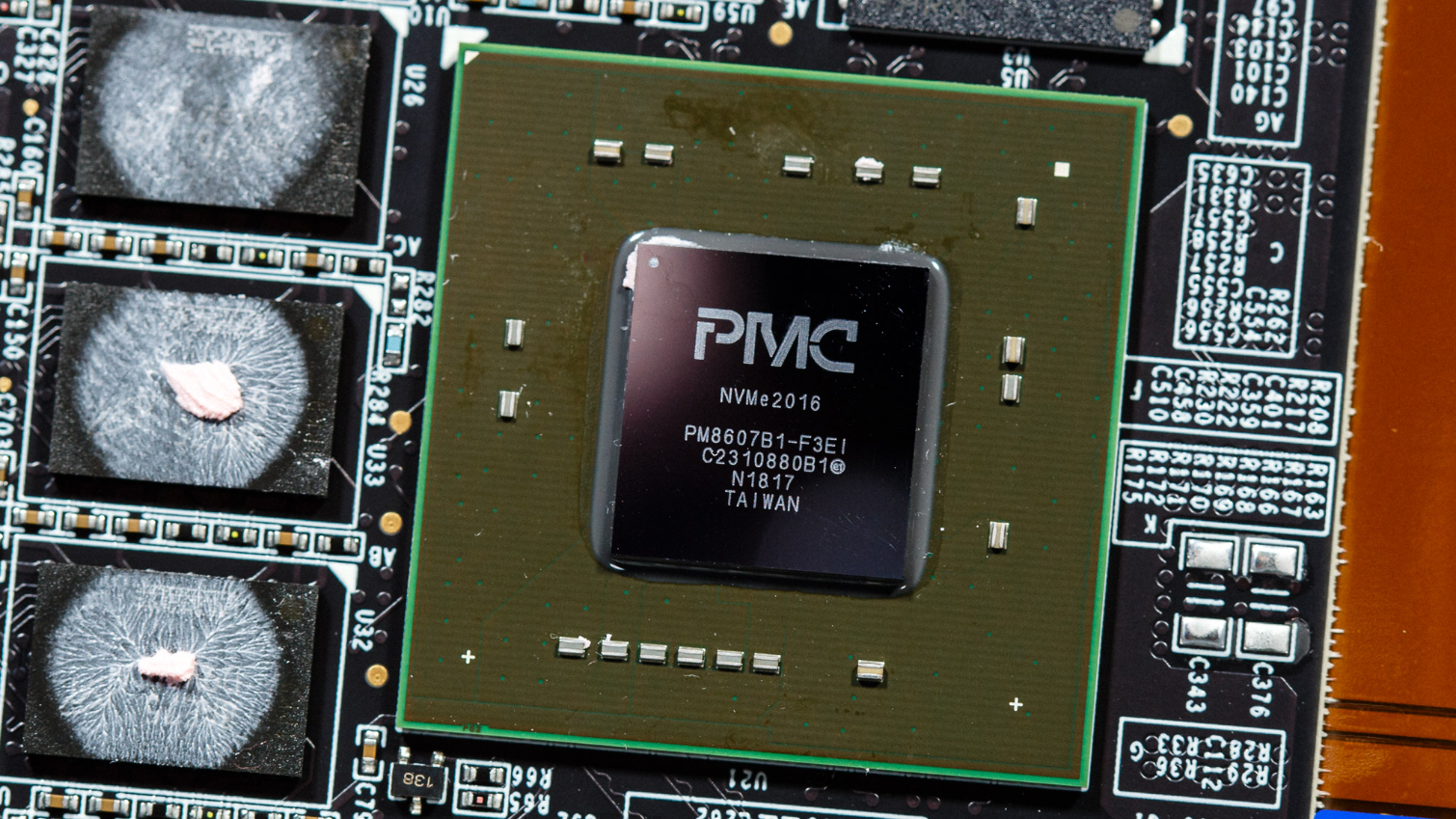Micron 9300 Series Enterprise NVMe SSD Review: Finding Balance in Performance
Why you can trust Tom's Hardware
Conclusion
The 9300 series is consistently fast, responsive, and may be the perfect match for your next upgrade. The 9300's 3.5 GB/s of sequential throughput saturates its interface during both read and write workloads, and can deliver upwards of 850,000/310,000 read/write IOPS. But with terabytes of Micron’s 64L 3D TLC feeding into the monstrous PM8607 NVMe2016 controller, it can be a bit power-hungry. The drive is a powerhouse at mid- to high-QDs, which is also where it is most efficient, so be sure to load up these SSDs with a heavy workload to get the most out of them.
Latency is still pretty similar to other flash-based devices. At best you’re going to see response times of 86-100us read, and around 11-20us in write workloads depending on your specific drive’s configuration and system hardware. While this is fast, especially considering its performance in steady state, it still doesn’t match Intel’s Optane SSDs and Samsung’s 983 with Z-NAND. For applications that need the absolute lowest latency, those may be a better option at the expense of capacity and/or write performance, and of course, upfront costs.
We like the compact size and flexibility of the 9300 series. This time around Micron dropped the ECO model and the AIC form factor because the market demands U.2 devices due to their compact size and high density. But, while Micron dropped a model and form factor, it helps to streamline the product stack and makes the buying decision even easier.
The 9300 series SSDs also gives IT admins a simple choice to leverage either more capacity or performance. If the performance of the 9300 MAX is needed, but budgets are tight, the PRO can be reconfigured to match the MAX. Pricing depends on model and volume, but Micron has cut costs compared to the 9200 series, so there’s some value to be had with the new release.
The sheer capacity is impressive, too. The 9300 PRO maxes out at 15.36TB, a nice bump up from 11TB over the previous-gen’s highest-capacity drive. That enables more storage density, and thus lower TCO. The drives also come with a proven enterprise feature set to ensure your data is not only fast but safe and protected. Overall, the Micron 9300 series is a solid buy and, without a doubt, earns our recommendation.
Image Credits: Tom's Hardware
MORE: Best SSDs
Get Tom's Hardware's best news and in-depth reviews, straight to your inbox.
MORE: How We Test HDDs And SSDs
MORE: Best External Hard Drives and SSDs

Sean is a Contributing Editor at Tom’s Hardware US, covering storage hardware.
